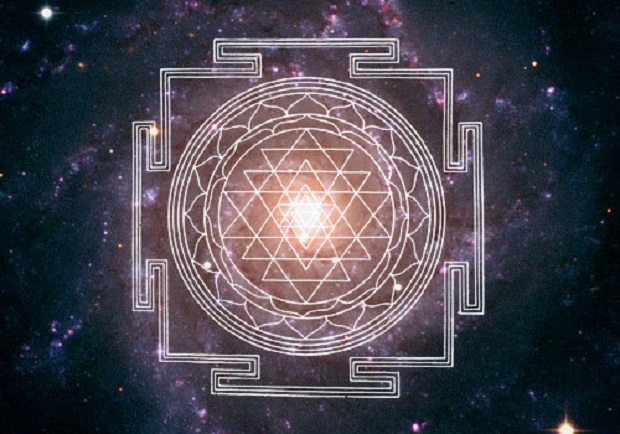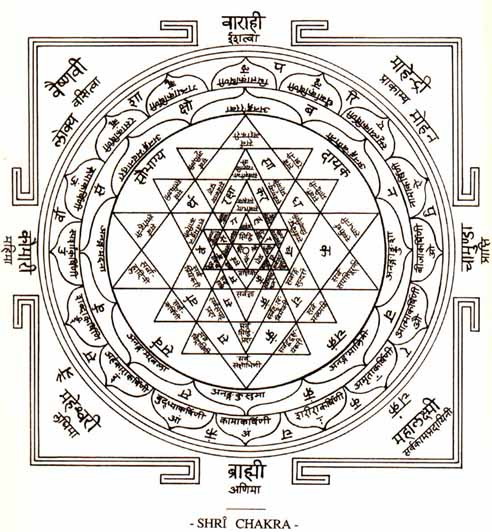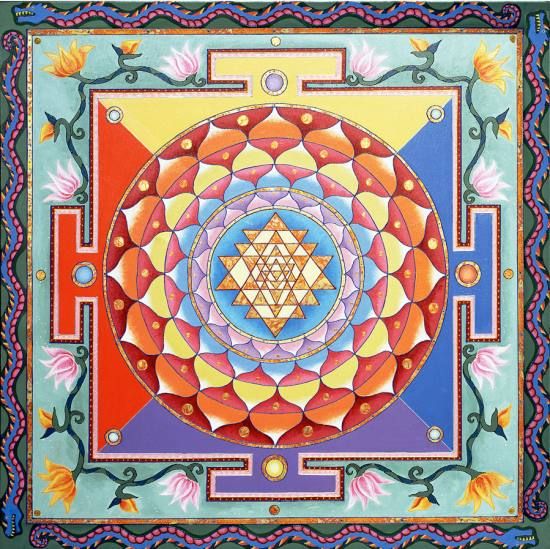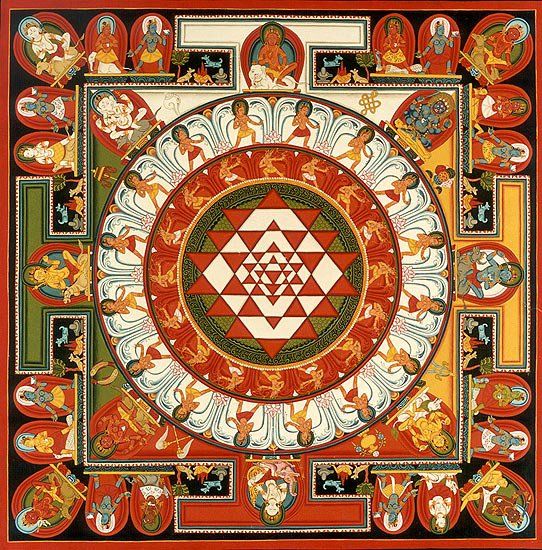




The Sri Yantra also known as the Sri Chakra represents all the fundamental principals of Tantric philosophy. It is known as the best or supreme existing yantra and all other yantras derive from it.
A Yantra is the symbolic representation of the Mother Goddess. It is made up of ‘linear and spatial ‘geometrical permutations’ of the Goddess in the mandala. You find yantras in many sacred geometry works and the design of the Sri Chakra/ Yantra is nine interwoven triangles, four of which represent the male principle (Shiva) and five inverted triangles representing Shakti, the feminine principal. The nine triangles also represent nine basic elements or root substances (mula-prakritis) of the universe. In the human body they are represented as nine substances; five from Shakti – skin, blood, flesh, fat and bone. The four from Shiva are – semen, marrow, vital energy (prana) and the individual soul.
The place of the mother goddess is represented by the dot or bindu in the centre of the design. The dot has four legs representing the deities responsible for the creation of all things.
Brahma – the creator is in the northeast.
Vishnu – the preserver is in the southeast.
Rudra – for withdrawal is in the southwest.
Sadasiva – for retention is in the northwest.
Surrounding this pattern are two concentric circles of lotus petals: the inner has 8 petals and the outer 16. The entire pattern is encased within a gated frame, called the “courtyard” or “earth stretch”.
An individuals spiritual journey or path to enlightenment from material existence to ultimate ascension and enlightenment is mapped through the sri yantra, the spiritual journey is undertaken as a pilgrimage each step or elevation is an ascent to the centre.
The Sri Yantra represents the totality of existence and can be used as a tool in meditation to contemplate the the path to enlightenment and the nature of the universe and existence.



